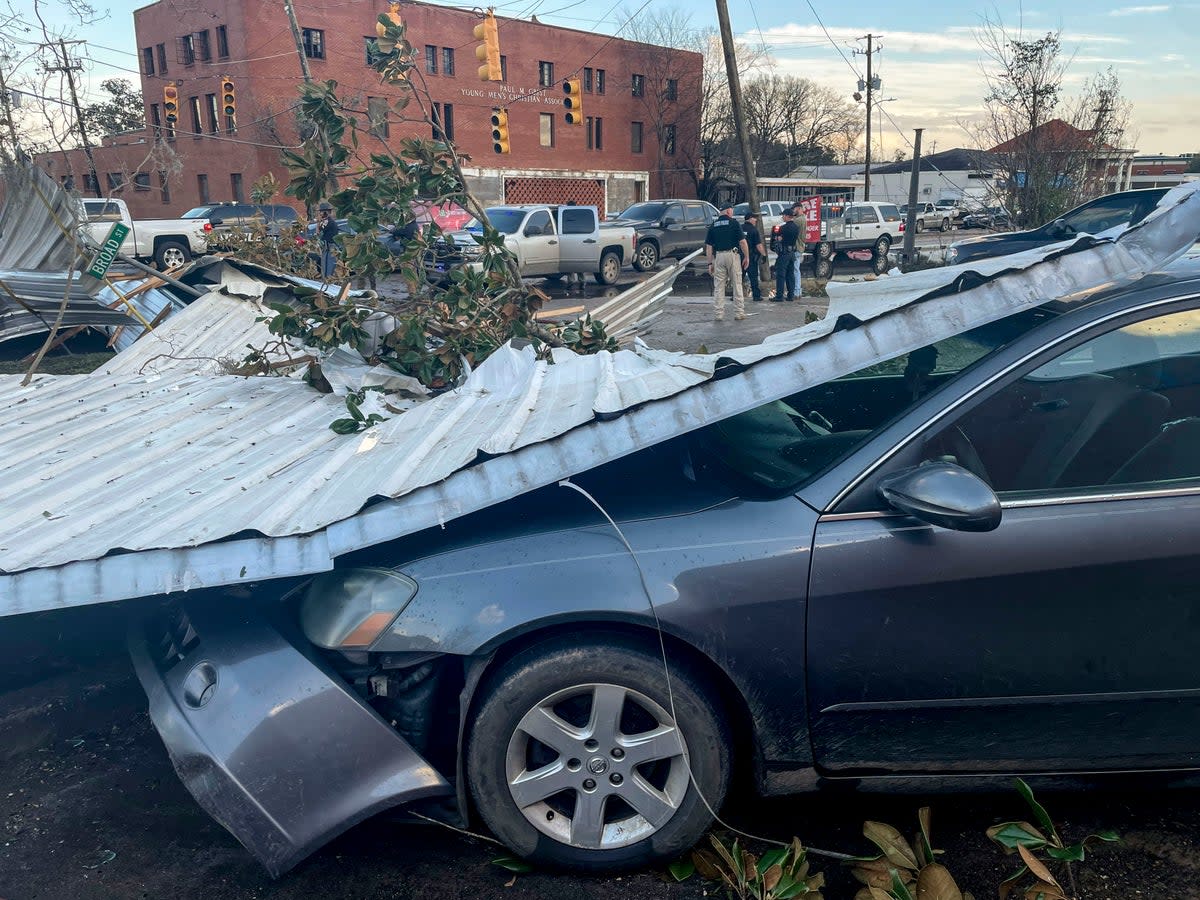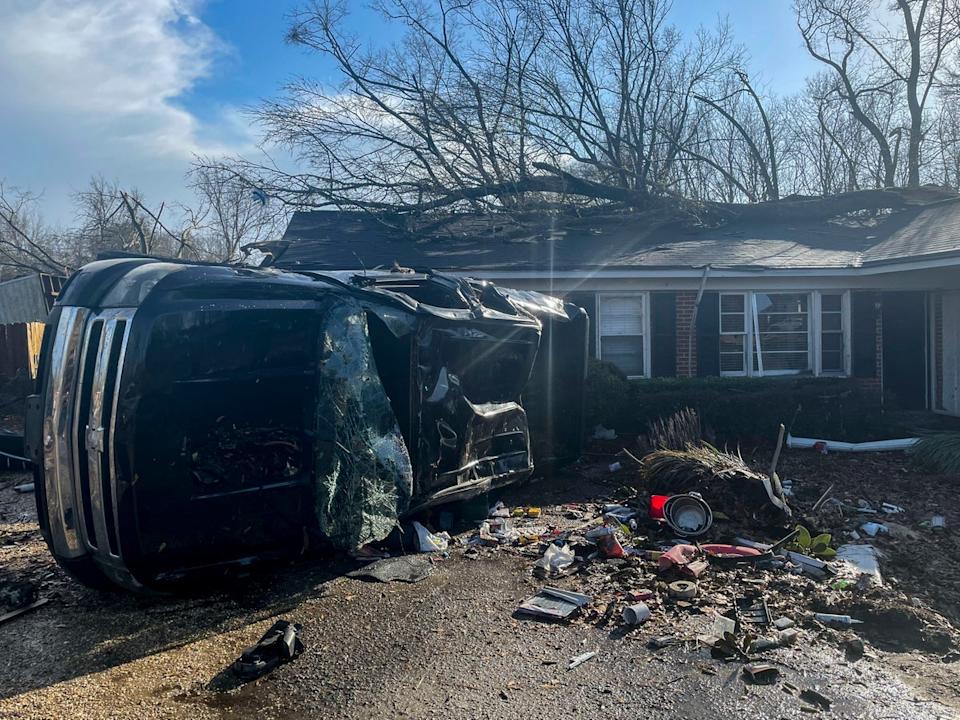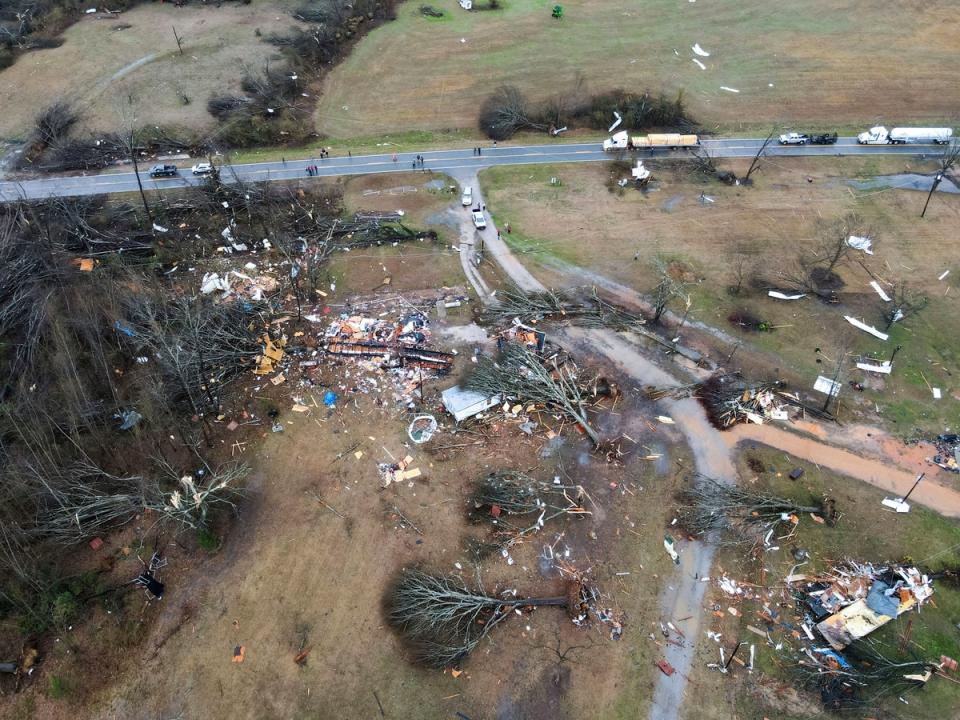Five-year-old boy among seven killed as huge storm and tornadoes rip through Georgia, Alabama and Kentucky

An “extremely dangerous” storm system swept across the US South, causing widespread destruction to homes and killing at least eight people, authorities said on Thursday.
At least 34 preliminary tornadoes swept the states of Alabama, Georgia, and Kentucky, where the storms ripped roofs off homes, uprooted trees and power lines and left tens of thousands of people without power, said the Storm Prediction Centre.
The youngest known victim was a five-year-old boy killed in Butts County, Georgia, when a tree fell on the car he was riding in, officials said.
In Alabama’s Autauga county, at least six people were confirmed dead in various storm-related incidents, said Ernie Baggett, the county’s emergency management director.
“It really did a good bit of damage. This is the worst that I’ve seen here in this county,” Mr Baggett said.
An initial estimate suggested some 40-50 homes were damaged or destroyed by the powerful storms that cut a strip across the county.
In Georgia, the storm also knocked a freight train off its tracks southeast of Atlanta in the same county where the boy was killed, officials said.
“There are some houses that were completely destroyed that haven’t been searched yet,” Autauga County coroner Buster Barber said late Thursday, adding that crews “are still in the process of searching through rubble”.

A number of people were reported trapped inside an apartment complex after trees fell on it, officials in Griffin, south of Atlanta, told local news outlets.
Firefighters had to rescue a man by cutting him loose after he was pinned for hours under a tree that fell on his house in Griffin.
Videos from Selma, a city famous for its history of the civil rights movement, showed a tornado cutting a wide path through the downtown area where buildings collapsed, oak trees were fallen, cars turned turtles or rammed into each other and power lines were left dangling.
Thick plumes of black smoke were seen rising over the city from a fire burning. It wasn’t immediately known whether the storm caused the blaze.

Selma mayor James Perkins said no fatalities have been reported yet, but several people were seriously injured. He said first responders were continuing to assess the damage and officials hoped to get an aerial view of the city on Friday morning.
“We have a lot of downed power lines,” he said. “There is a lot of danger on the streets.”
This is the same storm cell that moved through Selma, AL producing damage to the town. It remains tornado warned as it tracks north of Montgomery, paralleling I-85. pic.twitter.com/XpLLmKJV6s
— WeatherNation (@WeatherNation) January 12, 2023
After the powerful tornado caused destruction, Krishun Moore, a resident of the city of about 18,000 people, came out from her home to the sound of children crying and screaming.
Ms Moore and her mother encouraged the kids to keep screaming until they found two of them on top of the roof of a damaged apartment.
Another resident, Malesha McVay, who captured terrifying footage of a twister while driving parallel to the tornado with her family, said it was just less than a mile away from her home before it turned away.
“It would hit a house, and black smoke would swirl up,” she said. “It was very terrifying.”
Yikes, take a look at this intense tornado earlier today near Pine Level, Alabama!🌪️
Permission: Malesha McVay@WeatherBug #ALwx #Alabama #Tornado https://t.co/weJaAMYSNk pic.twitter.com/lPRfbQtNen— Live Storm Chasers (@LiveStormChaser) January 13, 2023
Around 40,000 homes were left without power in Alabama on Thursday night, according to PowerOutage.us, which tracks outages nationwide.
In Georgia, about 86,000 customers were without electricity after the storm system carved a path across a tier of counties just south of Atlanta.
Elmore County, Alabama, suffered “a large swath of damage in the northwestern portion of the county”, said Keith Barnett, director of the county’s emergency management agency.
Thursday’s tornado outbreak was unusual and damaging because of three factors: a natural La Nina weather cycle, warming of the Gulf of Mexico likely related to the climate crisis and a decades-long shift of tornadoes from the west to east, said Victor Gensini, a meteorology professor.

